The house I live in was built in 1907 by my great grandparents, Blanche Sheffield and Clarence Burrell. The Sheffield and Burrell families had been neighbors in Boone, Iowa before the Sheffield family moved to a farm six miles west of Fairview, Oklahoma in the 1890s. The soil in Iowa had been used and abused and many farmers were looking for some new sod to plow out of native grass in Oklahoma.
The year 1907 was a busy one for Blanche and Clarence since they built a house and barns two miles west of Fairview and got married, all in the same year. A few years later, my grandpa, Lawrence, and his brothers, Harold, Wayne and Glenn, were born in this house. Clarence was a good farmer and businessman during the hard times of the 1910s and 1920s. His hard work and fortune would pay off later when he was asked to buy out his father-in-law’s farms to save them from hard times. Clarence died in 1930 at middle age from a common ailment that is easily corrected today, but was fatal at the time.
Lawrence, then 17 years old, was burdened with the task of providing for his mother and his younger brothers during some tough economic times in the 1930s. After her sons were married and moved out, Blanche moved to town and her old farm house (built in 1907) was rented out a few times and finally abandoned. After Blanche’s death in 1968, her sons divided up the farms, with Lawrence inheriting the farm two miles west of town and his brothers receiving the farms six miles west of town. The farm two miles west was much better for raising crops, but more importantly for Lawrence’s brothers, was the discovery of oil on the farms six miles west in the 1970s. Oh, what a difference four miles makes in the mineral income.
Shortly after my grandparents, Lawrence and Lottie Davison, were married, they bought their own farm three miles west of town and built a house. This is the home where my father, Bryan, and his three siblings were born. This house was a mile from the highway and hard to navigate during
muddy conditions. Even if they did make it out to the highway, there was a sharp 20 foot rise from the dirt road up to the highway that was difficult to navigate in sloppy conditions. Every year on Thanksgiving and Christmas, when county workers were off work, the county commissioner would allow us to use their equipment to haul more red shale from our farm to build up the county road for another year of use. Can you imagine asking for a gentlemen’s agreement like that today? Just leave the keys in your tractors and trucks near the shale pit and we will use them over the weekend. My father, Bryan, finally got the idea to haul many loads of dirt to build the road up at a gentle slope to the highway for easier access in bad weather.
My parents, Bryan and Sue (Grubis) built a house and shop on the highway three miles west in 1962 where they sold Oliver, Allis-Chalmers and Minneapolis Moline equipment. Grandpa Lawrence was getting tired of driving on the muddy roads and got the idea to move his parents’ old abandoned house one mile from its present location to a location on the highway near Bryan’s house and shop. He enlisted the help of his brothers in the early 1970s to move the house and together the brothers lovingly restored it to its former glory and grandeur in memory of their parents.
Lawrence and Lottie had a big two acre garden at their old home and when the new home was restored, they started planning a location for their new garden next to the house. Much time was spent using our dirt moving equipment and a laser level system to make the garden plot as level as possible. At the time, we were using a JD 8630 pulling a 14 yard Reynolds scraper, a 7020 pulling a 60 foot Rayne plane with multiple leveling blades and a 4430 pulling a 16 foot Ratzlaff drag scraper to level our farm fields.
Ratzlaff scrapers, V blade sweep plows and other heavy duty farm equipment were built in Fairview by organic farmer Alvin Ratzlaff. He used the heavy cast 18 inch front wheels from old MM and MF tractors as the wheels on his scrapers to add natural weight to the scrapers. This equipment and a laser level system mounted on Grandpa’s Chevrolet LUV mini pickup made quick work of the garden project. (see CFT September/October 2018 for an article about Grandpa’s cherished LUV pickup). The garden and orchard was lovingly tended and produce shared by the elderly Burrells until their death. After a few months, your author was asked to move into the old farm house, so that it would not face a similar second fate of being rented, abandoned and forgotten.
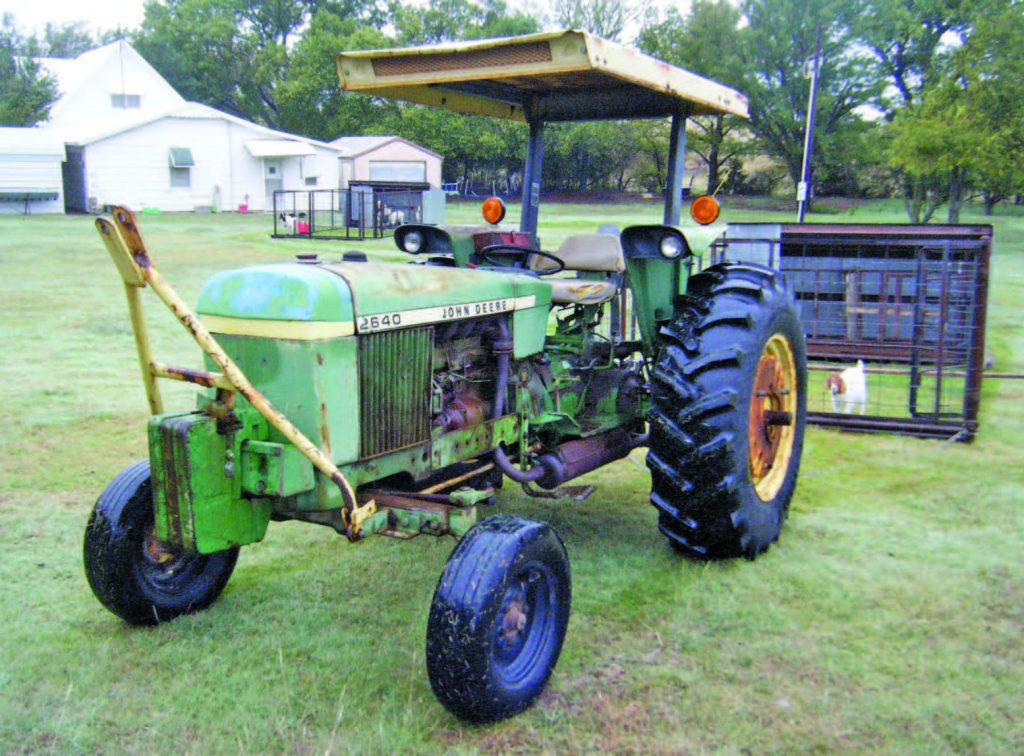
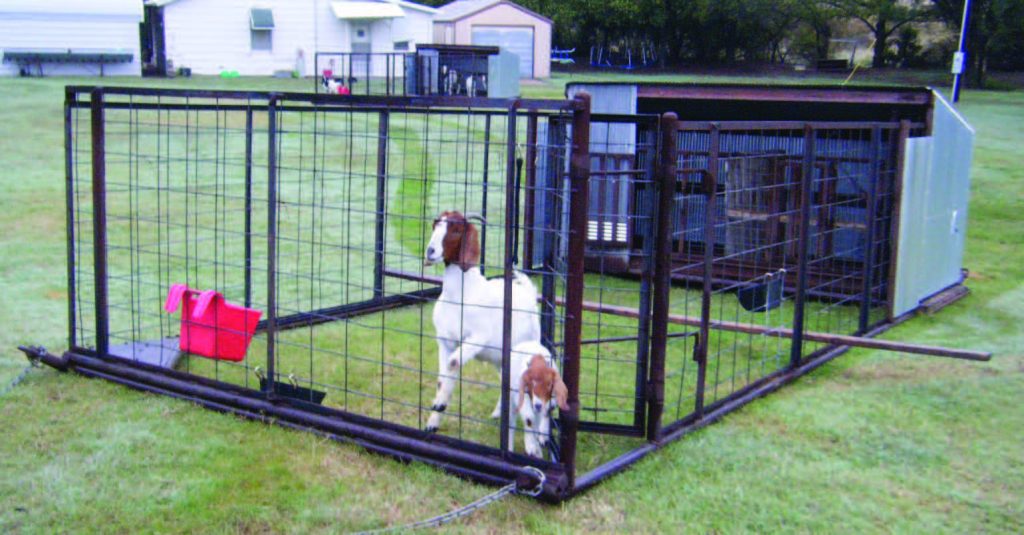

I had become accustomed to living in town and enjoyed driving my old cars to work every day, but welcomed the change to country living and all its benefits.
This author enjoys being the fourth generation to care for the old house, but his bride does not appreciate the bright orange shag carpet and the dark, dark cherry paneling that were oh so popular in the early 1970s. They just don’t make carpet that will last 50-plus years, like the factories manufactured in the good old days. Why replace it when it is still in good condition, he says to his wife?
Everything is great down on the farm, until I realize how much work it is to mow all the open areas around the house that make it so appealing to look at and enjoy. There is about quarter mile of open space between my dad’s house and mine. We enjoy keeping it open, mowed and uncluttered for aesthetic purposes. The former garden and orchard space is the worst offender, because it grows lush grass from the years of being tilled and fertilized with natural fertilizer provided by Grandpa’s cows. There has to be a better way than spending hours on the tractor, mowing the lawn every week. Seems like the grass in the garden area grows without rain, because of the expert leveling job we did years ago. All rain that falls on the garden area stays put and does not run off.
Grandpa’s experience farming in the 1930s with no rain made him want to save every inch of rain that fell on his farms. He thought that water was his most important resource and a definite blessing from God. His experiences farming with his father during the hard times taught him to shun man-made fertilizers and became an organic farmer and caretaker of the land.

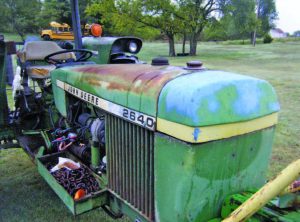
While driving round and round on the mower every week, it finally came to my mind that cattle, sheep or goats could do this job for me, while I sat on the porch and watched them work. The easy way would be to build a fence and let them go to work, but I did not want to have unsightly fences to cross while walking back and forth to work. In a stroke of genius, it occurred to me to build a small portable secure pen to house the livestock and move my lawn mowers everyday with a tractor. Cattle would make the most money, but their manure makes a mess to walk in, sheep are not tough enough and always looking for a place to die, so goats seemed like the logical choice. I constructed some pens 16feet long with pipe skids and a small shed on the end for shelter. The pen is made from tall panels so that coyotes or dogs can not threaten the valuable mowing crew. The shed has a wooden floor with gapped boards so the poop falls through and a full width swinging gate, so the goats can be locked in the shed and ride on the boards for daily moving.
After a few days, the goats realized the sound of the tractor roaring to life meant fresh grass, so they just walkalong as I drive forward, instead of being locked in shed for moving. After a while, the goats started demanding that they be moved twice a day, butt hey can stay in one place for several days if I’m gone for the weekend, etc. This system allows me to sleep well at night, not having to worry every time a horn honks, coyotes howl or dogs bark, knowing that my goats are secure in their bulletproof pen.
While building the pen, I tried to make it useful for other livestock, in case I get tired of the goats after a few years. The pen could be used for calves, dogs, poultry or wild hogs int he future with modifications.
Another great side affect of the goat mowers is their ability and de-sire to eat any scrap of human food we have left over. Nothing is wasted at our house any more. They love to eat banana peels, apple cores, orange peels, watermelon rinds, scrap lettuce, stale bread, cereal, chips and any other table scraps thrown in their pen.
These are working goats that have to eat grass for a living. We don’t give them any store bought goat feed pellets, but they love the fruit, vegetable and other scrap “treats” in their diet. We actually feel wasteful in the winter when the goats are gone be-cause we throw away so many scraps that they would love to eat.
Every part of my plan seemed to be perfect. Goats mow lawn, can’t get out of fence and go to highway, predators can’t reach animals and Mark has a nice, clean manicured lawn with minimal labor. The only fault of my plan is the exhaust of the goats. If they eat grass, they are going to poop and all that poop fertilizes the lawn and makes it grow even more. It’s a vicious cycle, but better than spending hours every week riding the mower.
Over time, I have learned to keep female goats that can mow and repro-duce to help finance the project. Not wanting to break ice and feed hay in the winter, I sell the male offspring, send the female mowers back to their home farm for breeding and leave them at the breeders all winter for boarding.
To my readers, this probably seems like a great plan, but like all plans, there were some mistakes. Thinking that the shed floor would last longer if treated wood was used seemed like a good idea during building. In reality, the treated wood is too slick for the goat hooves even after several years of use. In retrospect, I should have used plain two by six boards for the floor. The spacing between boards has been difficult to keep uniform, so that the poop falls through, and the goat hooves do not.
When everything is just right, the action of moving the pen shakes and sifts the poop out between the boards and the goats ride on top of the boards. Perhaps some small metal spacers would keep boards from expanding with the temperature changes and growing too close together. When building the pens, I made them 10 feet wide, which made them over width and hard to haul. If the pens were the same width of a legal trailer, livestock could be hauled in the pens on a trailer. Later I built another pen that will fit inside my bumper trailer to take the goats to tractor shows.
The goat mowers have become local celebrities and people enjoy seeing the goats and their innovative pens in action at the shows.
Another mistake the goats like is the cattle type panels used on the pen because they can stick their head through the square holes and eat outside the pen. Somehow they are able to work their horns through the small holes and get their whole head outside the pen to eat. It’s a daily fight among the goats to see who gets to eat the choice grass outside the pen, because it has to be better than the grass inside the pen. Right? Occasionally a goat will get its head stuck but the main problem is when the baby goats are born, they can just walk right through the cattle panels for several months until they grow big enough to keep themselves contained. For a few months, I am forced to hang the sheep and goat type panels around the pen to keep the babies in. This makes the adults mad, since they can no longer graze outside the pen as far as their necks will reach.
Since the name of this magazine is not GRD (Goat Raisers Digest), let’s get to the most important part of this article—the tractor. (My apologies to the publishers of GRD if there really is a goat raisers digest.)

The first year, my old 1949 JD model “G” had the pleasure of moving the goat mowers around each day. This was really hard on the tractor and made it gas foul a lot of plugs. I finally learned to just screw the sparkplugs in hand tight and then thread in another one when it got to firing on one cylinder.
Realizing the worst abuse a trac-tor could receive is cold starting and running for only two minutes twice a day, I started feeling bad and looked for another tractor to abuse. We had an old John Deere 2640 diesel tractor parked in the back that had been re-tired from active duty, because of worn balancer shafts. These four cylinder Dubuque engines had two balancer shafts to smooth out the odd vibrations that go along with four cylinders.
Readers may remember this trac-tor from past articles I have written about its famous life around our shop and farm after being rescued from a customer who had taken it apart and left for dead in a barn. Since the 2640 already had a bad engine and was not usable for any real work, I figured it could not hurt it any more to be started for four minutes a day. The repurposed 2640 diesel has worked well and does not mind starting even on cold spring and fall mornings. I still feel bad for only running it a few minutes a day, but it is a better life than languishing in the fence row until the tires go flat.
Deere and Company built these tractors at Dubuque, Iowa from 1976 to1982. The early tractors were built from’76 to ’79 and the later style tractors with black strobes on the yellow hood stripe were built ’80 to ’82. The later tractors had a taller hood that made the steering wheel seem lowered, compared to the early hood that was below the height of the steering wheel.
This bulge in the hood was to accommodate the later style electronic type gauges and other improvements.
These tractors were part of the2040, 2240, 2640, 2840, 2940 series and advertised together as a family, although we know that some of these were built in the Dubuque factory and some in the Mannheim, Germany factory
It gets confusing trying to figure out where they were built, but you can kind of guess by looking for the three cylinder or four cylinder engine and the configuration of the dash.
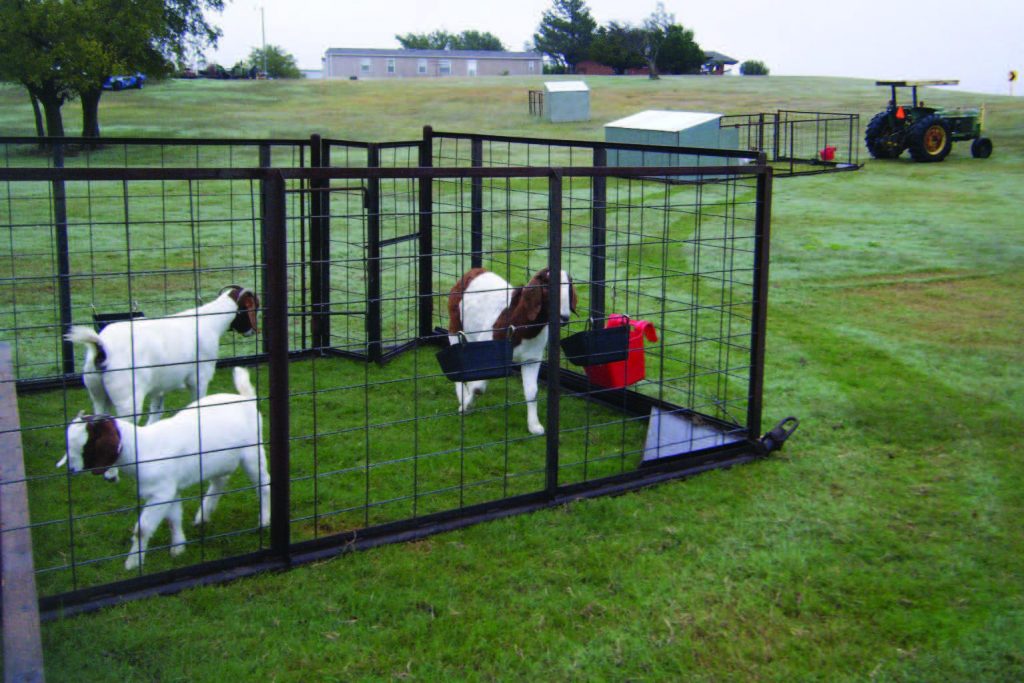
We did not sell very many of these utility type tractors at our shop. Most farmers wanted the six cylinder power and comfort of the round glass type, Sound-Gard body tractors such as the 4430, 4440, 4640, etc. Most local farmers were still running their big two cylinders or early 4010s in 1972 and wanted even bigger tractors. It seemed like there was always one of these utility tractors in the show room for farmers to lean on, since the cab less tractors were the only thing that would fit through standard height showroom doors of the time.
The 2640 in this article is a 1977 model of the early series tractors built with a metal dash. The later tractors had a plastic dash that seemed to bulge out around the steering column. I’m thankful that my tractor has the early dash with plain old style gauges. The 80-82 dash gauges were electronic and prone to failure after being stored out-side a few years. These open operator station Dubuque-built tractors are low to the ground and easy to step up onto and swing your leg over the transmission tunnel. Compare this to mounting up on a 4020 or 4430 with its several high steps to get to the operator’s seat. With one step, the driver can mount or dismount the 2640 with ease to check something on the ground.
The small physical size of this tractor is deceiving. With 70 PTO horsepower on tap and a weight of 5,800-plus pounds, whatever weight is added, it is knocking on the door of the famous 4010’s power and weight, in a much smaller, more maneuverable package. The tractor pictured has 12of those 175 pound weights and had even more on the outside of the wheels back in the old days, when it was used every day for mowing. When local farmers call me to pull their pickup out of the mud, the 2640 is my tractor of choice, because it has lots of added weight for traction, is light on the front wheels and it’s the only tractor I have without a loader. When I show up with my “little” tractor, they scoff and say I’m wasting my time even trying. My little Dubuque miracle surprises them every time. Also, the large canopy sure is nice while driving several miles down muddy roads in rain and snow to find my stuck friends.
Although it is probably not classified this way, I call my tractor an orchard utility since it has the under hood rear exhaust and the shorter 16.9-28 tires. Various sizes of 34 or 38 inch tires could also be ordered on these tractors to match the working conditions. For mowing in the hot sun, I installed a roll bar and a huge sun-shade from the top of an old 4020 cab. This ruined the orchard look of the tractor, but my employees sure were happy with the shade it provided. This tractor was a trade in on a 950 tractor that we sold. The owner had taken the engine apart and then let it sit in a barn for years.
I also purchased from the same customer a 1987 Pontiac Fiero GT that had a similar fate. He had taken the engine apart and let it sit for years beside the 2640. Both the tractor and the car looked totally white from the many years’ accumulation of bird poop. After I built the 2640 engine, the previous owner always tried to trade the 950 back to me for the now running 2640. The 950 was kind of a toy compared to the 2640, but I never would trade and kept telling him that at least he got a running tractor out of the deal and I just got an old junk car and tractor.
.We used the trusty 2640 for many years to mow around the shop and farm, mostly by employees who could not tear it up or get it stuck because it was a real tractor with big tractor features. Now that it is retired from active use, I enjoy using and abusing it still, in a different mowing capacity moving the goat mowers around. Several times, I’ve contemplated removing the canopy and roll guard just so the tractor would look better, but it sure is nice for the few minutes I use it every day during those spring rains or early season snow showers. Although it didn’t start out this way, I’m proud to own this collectible family heirloom tractor that has been around our farm for more than 40 years
